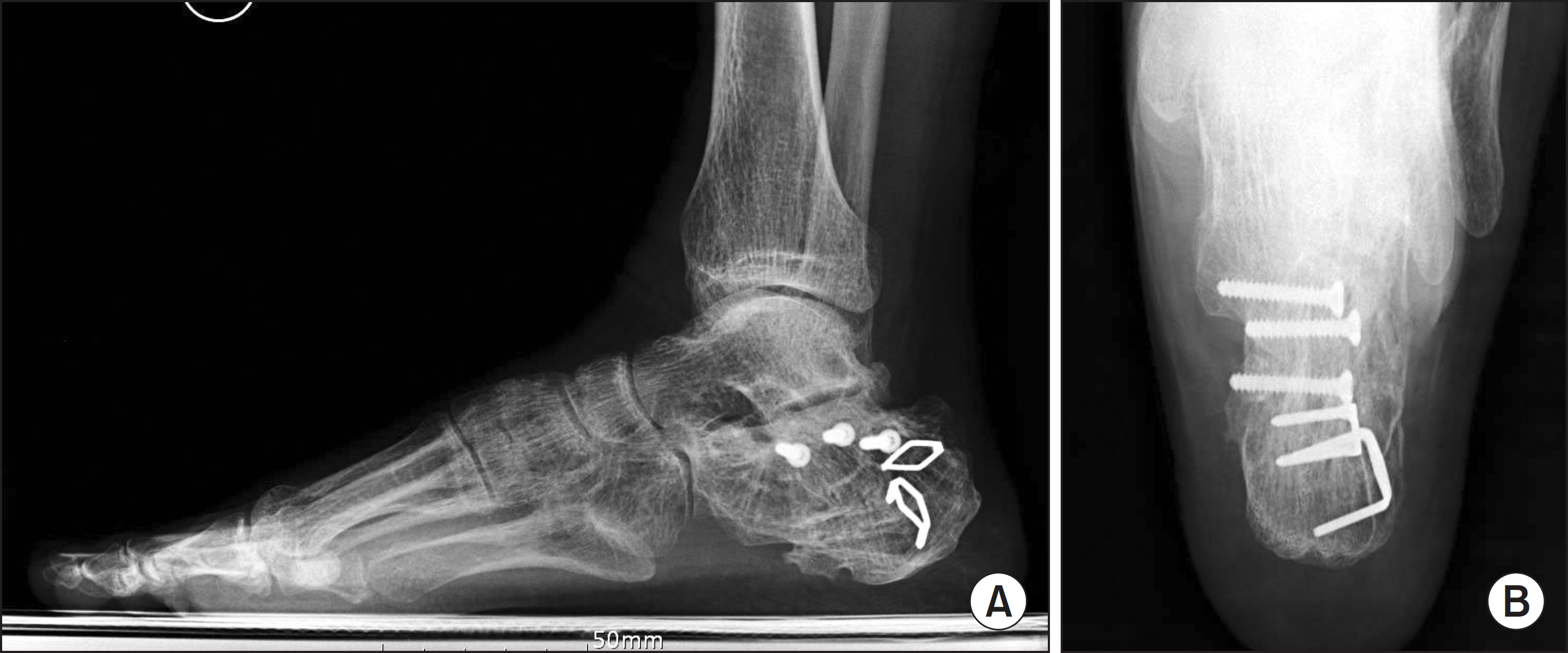J Korean Foot Ankle Soc.
2015 Sep;19(3):122-127. 10.14193/jkfas.2015.19.3.122.
Treatment of Calcaneal Fracture Malunion Using Lateral Exostectomy and Corrective Osteotomy: A Report of Three Cases
- Affiliations
-
- 1Department of Orthopedic Surgery, Sanbon Hospital, Wonkwang University School of Medicine, Gunpo, Korea. castkim@daum.net
- KMID: 2045017
- DOI: http://doi.org/10.14193/jkfas.2015.19.3.122
Abstract
- Inappropriate treatment for calcaneus fracture may result in malunion causing long-lasting pain and functional deficits. When such complications occur, the ideal principle of management is preserving congruence and motion of adjacent joints. For three patients with calcaneus fracture malunion, subtalar joint-preserving surgery using exostectomy and corrective osteotomy was performed, and satisfactory outcomes were achieved postoperatively.
Keyword
Figure
Reference
-
References
1. Banerjee R, Saltzman C, Anderson RB, Nickisch F. Management of calcaneal malunion. J Am Acad Orthop Surg. 2011; 19:27–36.
Article2. Lim EV, Leung JP. Complications of intraarticular calcaneal fractures. Clin Orthop Relat Res. 2001; 391:7–16.
Article3. Carr JB. Mechanism and pathoanatomy of the intraarticular calcaneal fracture. Clin Orthop Relat Res. 1993; 290:36–40.
Article4. Yu GR, Hu SJ, Yang YF, Zhao HM, Zhang SM. Reconstruction of calcaneal fracture malunion with osteotomy and subtalar joint salvage: technique and outcomes. Foot Ankle Int. 2013; 34:726–33.5. Aktuglu K, Aydogan U. The functional outcome of displaced intraarticular calcaneal fractures: a comparison between isolated cases and polytrauma patients. Foot Ankle Int. 2002; 23:314–8.
Article6. Mann RA, Baumgarten M. Subtalar fusion for isolated subtalar disorders. Preliminary report. Clin Orthop Relat Res. 1988; (226):260–5.7. Savory KM, Wülker N, Stukenborg C, Alfke D. Biomechanics of the hindfoot joints in response to degenerative hindfoot arthrodeses. Clin Biomech (Bristol, Avon). 1998; 13:62–70.
Article8. Rammelt S, Grass R, Zwipp H. Joint-preserving osteotomy for malunited intraarticular calcaneal fractures. J Orthop Trauma. 2013; 27:e234–8.
Article9. Chen YJ, Huang TJ, Hsu KY, Hsu RW, Chen CW. Subtalar dis-tractional realignment arthrodesis with wedge bone grafting and lateral decompression for calcaneal malunion. J Trauma. 1998; 45:729–37.
Article10. Myerson M, Quill GE Jr. Late complications of fractures of the calcaneus. J Bone Joint Surg Am. 1993; 75:331–41.
Article





